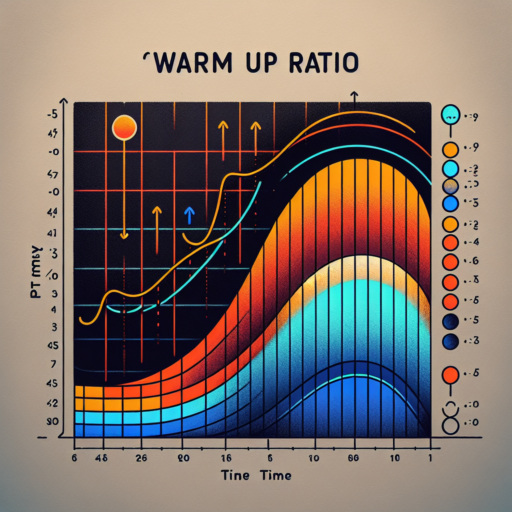Introduction to Calculating Calories on an Elliptical Machine
Understanding how to accurately calculate calories burned on an elliptical machine can enhance your fitness journey by providing key insights into your workout efficiency. An elliptical, known for its low-impact high-efficiency cardiovascular workout, has become a staple in both gyms and home fitness regimes. However, gauging the exact caloric expenditure can sometimes be a puzzle due to the various factors at play.
Factors Influencing Calorie Burn: Several variables such as intensity of the workout, duration, your body weight, and metabolic rate significantly affect the number of calories burned. Modern ellipticals come equipped with sensors and software designed to estimate calorie expenditure. For the most accurate readings, it is critical to input your personal data correctly into these machines.
Engaging in regular sessions on the elliptical can contribute significantly to your overall fitness goals, from weight loss to cardiovascular health improvement. By understanding how to monitor and calculate the calories burned, you can adjust your workouts for maximum efficiency, making every session on the elliptical count towards achieving your health and fitness objectives.
Why Knowing Your Elliptical Calorie Burn Matters
Understanding your elliptical calorie burn is crucial for anyone aiming to achieve specific fitness goals. Whether you’re looking to lose weight, maintain your current physique, or enhance your fitness levels, knowing how many calories you burn during an elliptical workout can significantly influence your approach to exercise and nutrition. This knowledge not only helps in crafting a bespoke workout routine but also ensures your efforts in the gym are as efficient and effective as possible.
Calorie tracking on an elliptical can serve as a motivational tool. Seeing tangible evidence of your calorie expenditure can boost your motivation, pushing you to maintain or even intensify your workouts. It’s a form of immediate feedback that shows the fruits of your labor in real-time, making every session on the elliptical more rewarding. Furthermore, aligning your diet with your workout calorie burn is simpler when you have precise data, allowing for better nutritional decisions that support your workout goals.
Accuracy in measuring calorie burn is imperative for setting realistic goals and expectations. While ellipticals generally provide calorie counts, personal factors such as age, weight, and effort level significantly impact the actual calories burned. Therefore, using a heart rate monitor or fitness tracker in conjunction with the machine’s reading can offer a more accurate depiction of your efforts. This accuracy ensures that your fitness journey is based on reliable data, helping to tailor your workouts and dietary needs more closely to your personal health and fitness objectives.
Factors That Affect Calorie Burn on an Elliptical
Certainly, understanding the critical elements that play into how many calories you burn on an elliptical can enhance your workout routine and help you better tailor your fitness goals. Here, we delve into those applicable factors.
One of the primary factors that influence calorie expenditure on an elliptical is the intensity of your workout. This includes both the level of resistance set on the machine and the speed at which you peddle. High-intensity workouts, involving greater resistance or faster pacing, can significantly increase the number of calories burned, as your body must expend more energy to sustain the activity.
Another pivotal aspect is the duration of your exercise session. Consistently extending the length of your workout allows your body to burn more calories over time. While short bursts of intense exercise can be effective, longer sessions provide sustained calorie burning, beneficial for weight loss and improving cardiovascular health.
Your body composition also plays a crucial role. Individuals with more muscle mass tend to burn more calories, even at rest, compared to those with higher fat percentages. Consequently, the effectiveness of your workouts on the elliptical can be influenced by your muscle-to-fat ratio, as a muscular body requires more energy during exercise.
No se han encontrado productos.
Understanding the Elliptical Machine’s Calorie Counter
When stepping onto an elliptical machine, one feature that catches the eye of most users is the calorie counter. This digital readout promises insight into the efficiency of your workout by estimating the number of calories you’re burning. But how does this calculation occur, and how accurate can it be? Understanding the mechanics behind the elliptical machine’s calorie counter can empower users to use this data more wisely during their fitness journey.
The elliptical machine’s calorie counter primarily bases its calculation on a few input parameters such as the user’s weight, the intensity of the exercise (which it measures in terms of speed and resistance), and the duration of the workout. These figures help the machine to provide an estimated calorie burn. However, it’s important to note that this is indeed just an estimation. Variables such as body composition, metabolism rate, and fitness level, which can significantly impact actual calorie expenditure, are not fully accounted for by most elliptical machines.
Accuracy of Calorie Counters varies widely among different elliptical models. Some newer and more advanced machines may ask for additional details like age, gender, and even height to provide a more tailored estimation. Despite these advancements, the inherent limitation lies in the machine’s inability to measure individual metabolic rates and changes in efficiency as one’s fitness levels alter over time. Therefore, while elliptical machine calorie counters can offer a ballpark figure, they should not be relied upon as the sole indicator of workout effectiveness.
How to Accurately Calculate Calories Burned on an Elliptical
Calculating the calories burned while using an elliptical can be a key component of managing your fitness goals. Unlike a straightforward jog or bike ride, the elliptical machine’s unique combination of resistance, stride, and speed presents a challenge in determining your energy expenditure. However, understanding a few key factors can lead you to a more accurate calculation.
First, it’s essential to consider the role of body weight in the equation. Heavier individuals tend to burn more calories than their lighter counterparts for the same amount of exercise due to the increased energy required to move their body. Therefore, including your body weight in any calculation is crucial for accuracy. Most modern ellipticals come equipped with built-in calculators that ask for your weight before starting your session.
Another significant factor is the intensity of your workout. The elliptical machine’s settings for resistance and incline can drastically change the amount of effort you put in, and thus, the calories you burn. A higher resistance and incline level means you’re working harder, which should be reflected in your calorie count. To get a more precise number, use the heart rate monitor function present on many machines, as this provides insight into how hard your body is working.
The Role of Intensity in Elliptical Calorie Calculation
Understanding the role of intensity in elliptical calorie calculation is crucial for anyone looking to maximize their workout efficiency. When it comes to burning calories on an elliptical machine, the intensity of your workout plays a pivotal role. Not all sessions are created equal, and varying your intensity can significantly impact the total number of calories burned during exercise. This relationship between intensity and calorie expenditure is fundamental in devising a workout plan that effectively meets your fitness goals.
Intensity in elliptical workouts can be manipulated in a few key ways: through speed, resistance level, and the duration of the workout. Increasing any of these factors will inevitably lead to a higher calorie burn. However, it’s the careful balance of these elements, aligned with one’s physical capabilities and endurance levels, that creates a conducive environment for optimal calorie burning. Recognizing how to adjust these variables in harmony with your body’s signals is essential for maximizing workout outcomes.
Scientific studies have consistently shown a direct correlation between workout intensity and calorie expenditure on elliptical machines. This underscores the importance of incorporating varying intensity levels into your exercise regime. By alternating between high-intensity intervals and lower-intensity recovery periods, also known as interval training, users can significantly enhance their metabolic rate and, subsequently, the total calories burned. This approach not only boosts calorie burning but also promotes cardiovascular health and stamina improvement.
Elliptical Workouts for Maximum Calorie Burn
Elliptical workouts are widely celebrated for their ability to offer a high-intensity cardiovascular workout with low impact on the joints. Ideal for burning a significant number of calories in a short period, these workouts can be optimized to ensure you’re getting the most out of every session. To achieve maximum calorie burn, understanding the effective use of resistance and speed is crucial. By adjusting these two variables, you can significantly increase the calorie burn and efficiency of your workout.
Variety is also key to maximizing your calorie expenditure on an elliptical. Incorporating intervals that alter between high intensity and recovery periods has been shown to not only boost calorie burning but also enhance cardiovascular health. This technique, known as High-Intensity Interval Training (HIIT), can easily be applied to elliptical workouts to challenge the body and prevent workout boredom. Engaging different muscle groups through varied movements and resistance levels will further amplify the calorie-burning effect.
Finally, paying attention to posture and engagement during your elliptical workout can greatly influence the effectiveness of your session. Ensuring you’re using full body motion, actively engaging both the upper and lower body, will not only help in burning more calories but also in improving overall fitness. The integration of arm movements with leg cycles increases the heart rate more effectively, contributing to a substantial calorie burn.
Comparing Elliptical Calorie Burn to Other Cardio Machines
When exploring the landscape of cardio machines, understanding the efficiency of calorie burn becomes pivotal. The elliptical trainer stands out as a popular choice for many fitness enthusiasts, but how does it stack up against other machines?
Elliptical vs. Treadmill
First, consider the elliptical versus the treadmill. The treadmill often leads in terms of calorie burn due to the potential for high-intensity running. However, the elliptical offers a low-impact alternative that can still provide a substantial calorie burn. Factors such as resistance levels and stride length on an elliptical can significantly affect the number of calories burned, making it a versatile option for many users.
Elliptical vs. Stationary Bike
Another comparison is between the elliptical and the stationary bike. Here, the difference in posture and muscle engagement comes into play. The elliptical engages both the upper and lower body, potentially leading to a higher calorie burn compared to the stationary bike which focuses primarily on the lower body. However, the intensity of the workout and the resistance settings on the stationary bike can create a challenging workout that rivals that of an elliptical.
Ultimately, the choice between an elliptical and other cardio machines depends on personal preference, fitness level, and specific health goals. Whether the aim is to maximize calorie burn or to find a sustainable and enjoyable workout routine, each machine offers unique benefits. Remember, consistency and effort are key components in achieving fitness outcomes, regardless of the equipment chosen.
Common Myths About Elliptical Calorie Calculation
When it comes to understanding how calories are calculated during an elliptical workout, there are several misconceptions that often circulate in fitness communities. These myths can not only skew expectations but also potentially impact the effectiveness of your fitness regime. It’s crucial to debunk these myths for a clearer insight into how elliptical calorie calculation truly works.
Myth 1: The More Intense the Workout, the More Accurate the Calorie Count. Many gym-goers believe that pushing themselves to the limit on the elliptical means the calorie count displayed is more precise. However, this isn’t necessarily the case. The accuracy of elliptical machines’ calorie counters mainly depends on the algorithms used by the manufacturer, which might not factor in personal characteristics such as body composition and fitness level adequately.
Myth 2: All Ellipticals Calculate Calories the Same Way. This is another widespread belief that doesn’t hold water. Different elliptical machines can use various methods to estimate calorie burn, and models vary significantly from one manufacturer to another. Factors such as stride length, resistance level, and user input regarding weight and age can influence the final figure, meaning the calculations can vary widely between machines, even with the same workout intensity and duration.
Myth 3: You Can Rely on Elliptical Calorie Counts for Weight Loss Goals. While elliptical machines provide a convenient estimate of calories burned, relying solely on these figures for weight loss is misguided. These estimates often don’t take into account individual metabolism rates and can vary in accuracy. Therefore, it’s advisable to use these numbers as a general guide rather than an exact measure of your calorie expenditure.
FAQs on Calculating Calories with an Elliptical Trainer
Certainly! Utilizing elliptical trainers as a cornerstone of fitness routines is a popular choice for many. Ensuring you’re effectively burning calories is essential to meet your fitness goals. Here, we delve into commonly asked questions about calculating calorie expenditure during elliptical workouts.
How Accurate are Elliptical Calorie Counters?
Elliptical machines often come equipped with calorie counters, but their accuracy can vary. These devices typically calculate calories burned based on generic data such as average weight and effort level. For a more accurate estimate, consider using a heart rate monitor or a fitness tracker that can personalize the calculation based on your specific details like age, weight, and workout intensity.
What Factors Influence Calorie Burn on an Elliptical?
When it comes to maximizing calorie burn, several factors come into play. The key elements include workout duration, the intensity of the session, and your body weight. Increasing the resistance or incline can significantly boost the number of calories burned. Also, integrating intervals into your routine can elevate your metabolic rate, making your body burn calories long after your workout has ended.
Can You Estimate Calorie Burn Without Gadgets?
While gadgets provide a more precise calculation, you can still estimate calorie burn through basic formulas. A general guideline is that a person weighing around 155 pounds burns approximately 2.16 calories per minute per pound of body weight. This means, during a 30-minute elliptical workout, the estimated calorie burn could be around 333 calories. However, remember this is a ballpark figure and individual results may vary based on the factors previously mentioned.



